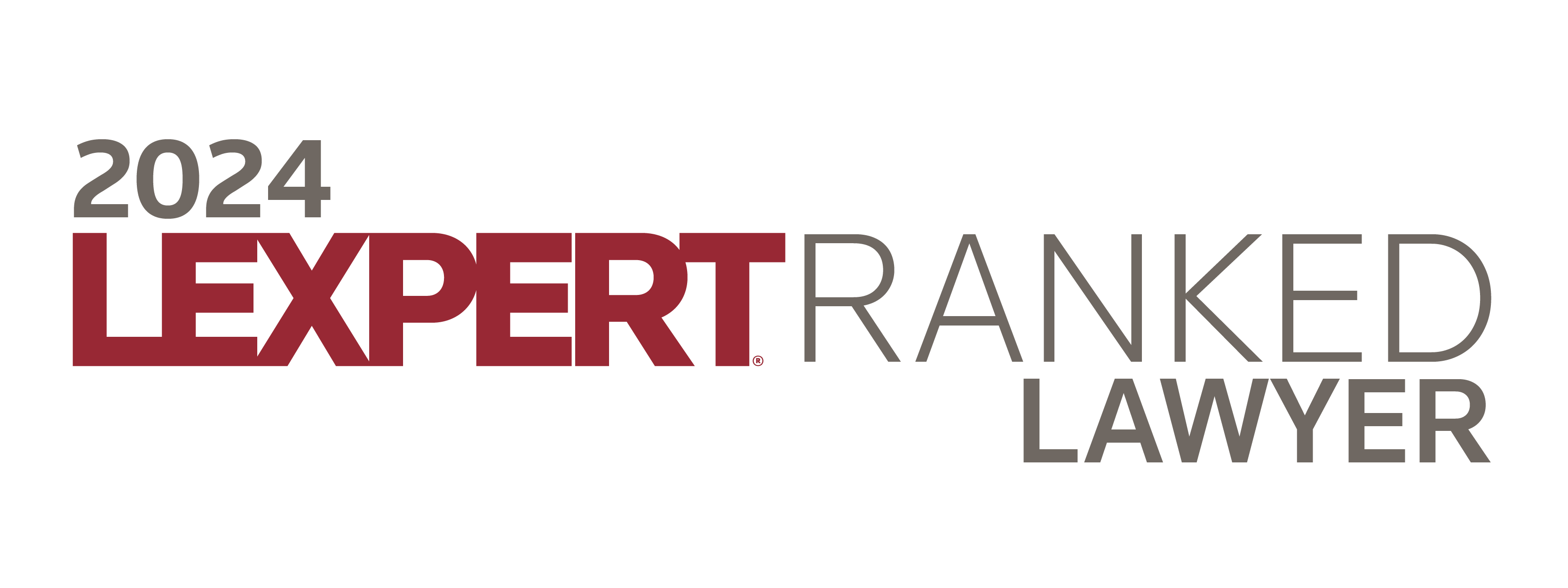Misuse of the complaints mechanism on an e-commerce platform
At a time when Canada and many other countries are taking steps to protect users from harm online,1 a decision was handed down by the Supreme Court of British Columbia (the “Court”) on January 15, 2024, regarding the conduct of a competitor with respect to complaints about intellectual property infringement made on Amazon’s e-commerce website. Amazon’s platform is similar to many other e-commerce platforms that have a complaint mechanism for third-party use of intellectual property in violation of the rights of the real owners thereof. The complaint mechanism makes it possible for a complainant to submit an intellectual property infringement claim regarding content to which it has a good faith right in order to partially or fully remove the content in question from the pages of the alleged infringing party published on Amazon’s platform. Such a mechanism has its purpose, as it is an effective way of tracking down counterfeiters. As we will see in Keezio Group, LLC v. The Shrunks' Family Toy Company Inc.,2 the mechanism can also be used maliciously. The facts and the plaintiff’s allegations In this case, complaints were lodged by a competitor of the company that was the subject of the complaints, with both entities operating in the inflatable bed industry. Keezio Group, LLC (“Keezio”) markets the “Hiccapop Inflatable Toddler Travel Bed” (the “Hiccapop Bed”), while The Shrunks’ Family Toy Company Inc. (“The Shrunks”) offers inflatable beds consisting of a mattress placed in an inflatable bed frame. Both companies primarily sell their products on the Amazon retail platform. In February 2017, Amazon informed Keezio that it had received a report of trademark infringement regarding the Hiccapop Bed, the complainant being identified as Mr. Cirjak of The Shrunks. Subsequently, in accordance with the applicable process, Amazon removed the product from Keezio’s product-listing pages on its website. It is worth noting that assessing the substantive validity of a complaint is not part of Amazon’s complaints handling process. On or about April 17, 2017, Keezio received another notice. The complaints of 2017 were eventually withdrawn and the page featuring the Hiccapop Bed was restored. In November 2019, Keezio received two more notices of complaints from Amazon regarding violations similar to those received about two years prior. The first of these two notices, sent on November 22, 2019, referred to trademark infringement. Amazon thus removed the page in question, which contained a chart comparing Keezio’s products with The Shrunks’ products. Keezio asked for clarification of this alleged infringement but received no response from The Shrunks. Having received no details about the infringement from The Shrunks, Keezio ultimately changed its webpage to remove all mentions of “The Shrunks”, replacing them with “Rhymes with Skunks”. Although Amazon informed Keezio in a message in November 2019 that it would restore its content, the evidence does not clearly establish whether this was done. The second notice of infringement, dated November 28, 2019, concerned an allegation of copyright infringement on six webpages for the Hiccapop Bed. The pages were delisted on or about November 28, 2019, and eventually reinstated on December 2, 2019. The Shrunks denied having filed the complaints of 2019. However, the Court did not hesitate to conclude that The Shrunks was also behind these complaints. Issues at bar about the complaints There were many issues in this case, and some claims were eventually withdrawn. We will focus on the two complaints made in 2019. Specifically, Keezio argued that the complaints that The Shrunks had lodged with Amazon were unfounded, resulting in a loss of business for Keezio. In particular, the Court analyzed section 7 of the Trademarks Act.3 To succeed in such a claim, the plaintiff must prove (i) that a false or misleading statement was made (ii) that tends to discredit the business, goods or services of a competitor, (iii) resulting in damages. The Court held that the person making the statements need not know of their falsity in order to satisfy these criteria. Findings of the Court (i) The allegation of trademark infringement in the comparative chart The trademark infringement complaint concerned a comparative chart featuring both Hiccapop Bed and The Shrunks products, with comparative data on the features of both products. The data itself was not challenged. The complaint related to the unauthorized use of The Shrunks’ registered trademark in the chart. Basing itself on the landmark decision in Clairol International Corp. et al v. Thomas Supply and Equipment Co.,4 the Court concluded that Keezio’s comparative chart did not amount to “use” of The Shrunks trademark pursuant to s. 4(1) of the Trademarks Act, and that therefore said chart did not constitute trademark infringement. Accordingly, the Court determined that The Shrunks’ complaint that Keezio infringed its trademark was unfounded. The Court further concluded that the comparative chart was not contrary to section 22 of the Trademarks Act:5 The mere depiction of a competitor’s trademark in comparative advertising does not in itself depreciate the value of the goodwill attached to a product. (ii) The allegation of copyright infringement The copyright infringement notice contained six Amazon Standard Internal Catalog Identification Numbers (ASINs), which identified six webpages that were sales pages for the Hiccapop Bed. The Court ruled that the allegation of copyright infringement in question was unfounded, as it related to a bed, which is a useful article sold in a quantity of more than 50. The reproduction of the bed design was therefore not covered by subsection 64(2)6 of the Copyright Act. The Court found The Shrunks liable for the two complaints made in November 2019, which it determined to be false or misleading as the allegations of trademark and copyright infringement were unfounded. The Court stated that the complaints tended to discredit Keezio’s business because they misled Amazon into removing Keezio’s product listing pages. On this point, the Court referred to a passage from the Federal Court decision Yiwu Thousand Shores E-Commerce Co. Ltd. v. Lin.7 With regard to damages, the Court determined that Keezio’s evidence regarding the calculation of damages was inadequate on several counts, but nonetheless awarded damages based on a decrease in Keezio’s sales on the dates of delisting. The Court did not hold The Shrunks’ principal personally liable and did not grant a permanent injunction or punitive damages. It also dismissed The Shrunks’ counterclaim for copyright infringement, and ordered The Shrunks to pay Keezio costs, excluding taxes and disbursements. Comments This decision highlights how crucial it is for complainants to be serious when filing complaints. The complaints mechanism on platforms such as Amazon is an extremely useful and effective tool for reporting rights violations, provided that use of such mechanisms is made in good faith and based on solid legal foundations. Although such a mechanism is easy to use, the rights involved must absolutely be analyzed in advance, as an ill-founded complaint can result in harm—which can be considerable—especially when the platform has a global reach. In such a case, the removal of a webpage can result in significant damages. It is therefore essential to exercise due diligence, as a country-by-country analysis of rights can reveal different legal situations and rights holders from one country to another. Not only must competitors carefully consider and weigh their actions, but e commerce website operators must also be vigilant and respond promptly to requests for removal and geographic restrictions. Amazon recently experienced a situation like this when a UK court ruled against it.8 The decision dealt with a targeting operation on Amazon’s website, where sales offers or advertisements were intentionally directed at consumers in the UK where the trademarks were not owned in that country by the same company offering the products for sale. A word to the wise! See Bill C-63, the Online Harms Act, which establishes a regime to address such harm. Keezio Group, LLC v. The Shrunks' Family Toy Company Inc., 2024 BCSC 64. Section 7 of the Trademarks Act: Prohibitions 7. No person shall - make a false or misleading statement tending to discredit the business, goods or services of a competitor; - direct public attention to his goods, services or business in such a way as to cause or be likely to cause confusion in Canada, at the time he commenced so to direct attention to them, between his goods, services or business and the goods, services or business of another; - pass off other goods or services as and for those ordered or requested; or - make use, in association with goods or services, of any description that is false in a material respect and likely to mislead the public as to (i) the character, quality, quantity or composition, (ii) the geographical origin, or (iii) the mode of the manufacture, production or performance of the goods or services. Clairol International Corp. v. Thomas Supply & Equipment Co. 55 C.P.R. 176, 1968 CanLII 1280. Section 22 of the Trademarks Act: 22.Depreciation of goodwill - 22 (1) No person shall use a trademark registered by another person in a manner that is likely to have the effect of depreciating the value of the goodwill attaching thereto. Subsection 64 (2) of the Copyright Act: 64 (2) Non-infringement re certain designs Where copyright subsists in a design applied to a useful article or in an artistic work from which the design is derived and, by or under the authority of any person who owns the copyright in Canada or who owns the copyright elsewhere, - the article is reproduced in a quantity of more than fifty, or - where the article is a plate, engraving or cast, the article is used for producing more than fifty useful articles, it shall not thereafter be an infringement of the copyright or the moral rights for anyone, - to reproduce the design of the article or a design not differing substantially from the design of the article by (i) making the article, or (ii) making a drawing or other reproduction in any material form of the article, or - to do with an article, drawing or reproduction that is made as described in paragraph (c) anything that the owner of the copyright has the sole right to do with the design or artistic work in which the copyright subsists. Yiwu Thousand Shores E-Commerce Co. Ltd. v. Lin, 2021 CF 1040. See paragraph 58 of this decision: [58] I agree with ThousandShores that the Respondent made false allegations and misstatements to Amazon.ca in the Takedown Requests, at least one of which was made after the Respondent’s receipt of the October 2020 Letter. ThousandShores had no ability to respond directly to his allegations. The absence of any evidence of use of the OHUHU trademark by the Respondent and the likelihood of confusion between the parties’ marks means the Impugned Registration is invalid. Accordingly, the Respondent’s statements regarding the Impugned Registration, the inauthenticity of ThousandShores’ OHUHU Goods and its infringement of the Respondent’s rights were false. The statements clearly tended to discredit ThousandShores’ business, the OHUHU Storefront, and the OHUHU Goods. They misled Amazon.ca, causing it to remove ThousandShores’ listings for the OHUHU Goods with a resulting loss of profits. ThousandShores’ only recourse was to provide evidence of authorization or license by the Respondent, or to challenge the validity of the Impugned Registration. Lifestyle Equities CV and another v Amazon UK Services Ltd and others [2022] EWCA Civ 552, upheld by the Supreme Court on March 6, 2024 ([2024] UKSC 8).



